SmartUP UHPC Utilized in Field Cast Connections for Series of Five TxDOT Bridges
UHPC has been a major component in many Accelerated Bridge Construction or ABC projects. To date, the major use of UHPC has been in prefabricated bridge element construction; sometimes called closure pours. The Texas Department of Transportation (TxDOT) recently utilized UHPC for prefabricated bridge element connections on a series of five bridges in North Texas.
One of those bridges is in rural Hemphill County, located on the eastern side of the Texas Panhandle, close to the border with Oklahoma. People living near the small town of Canadian, TX rely on U.S. Highway 83 as a major travel route. That’s why it was important to limit the road’s closure during a series of recent bridge replacement projects.
“The detour lengths of these bridges were significantly longer than what could be considered normal,” says Sonja Gross, Public Information Officer for TxDOT’s Amarillo District. “To limit the impact to the consumer, we looked into alternative construction methods.”
That alternative involved accelerated bridge construction (ABC): the utilization of precast elements, including columns, piers, cap beams and Northeast Extreme Tee (NEXT) beams. The bridge joints and end slabs were the only cast-in-place components needed before traffic was returned.
While a typical bridge replacement can take up to six months, this project was finished in just 12 days.
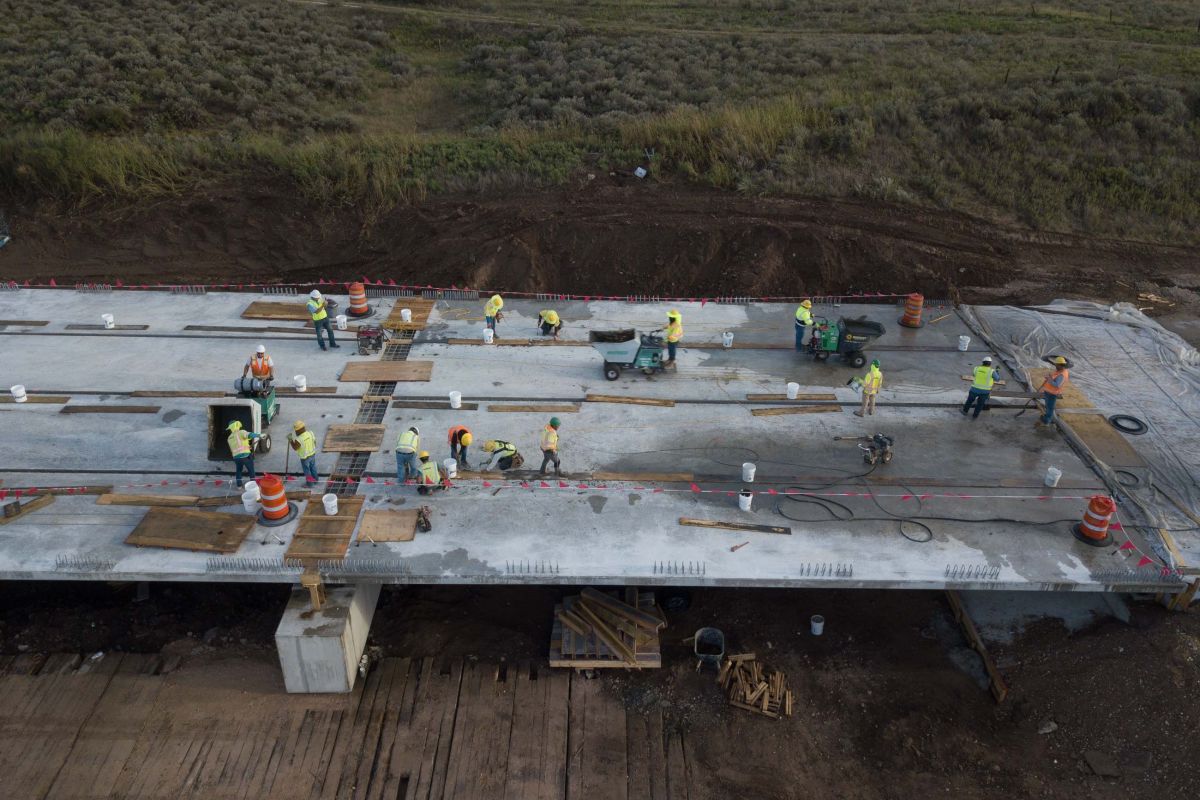
Prefabricated Elements
Texas Concrete Partners, LP, a well known supplier of prestressed concrete products, fabricated the girders, the NEXT beams and the precast bent caps used in the project. Dave Tomley, chief engineer of Texas Concrete Partners, says contractor Webber, LLC self-performed the abutments and the wing walls, and then added cast-in-place barriers.
Tomley expects the use of ABC to only increase over time. “I think across the board, I’d say the majority of the state DOTs throughout the United States have already delivered projects using Accelerated Bridge Construction because of both the time savings and the cost savings as well. There’s just tremendous amount of benefits with ABC.”
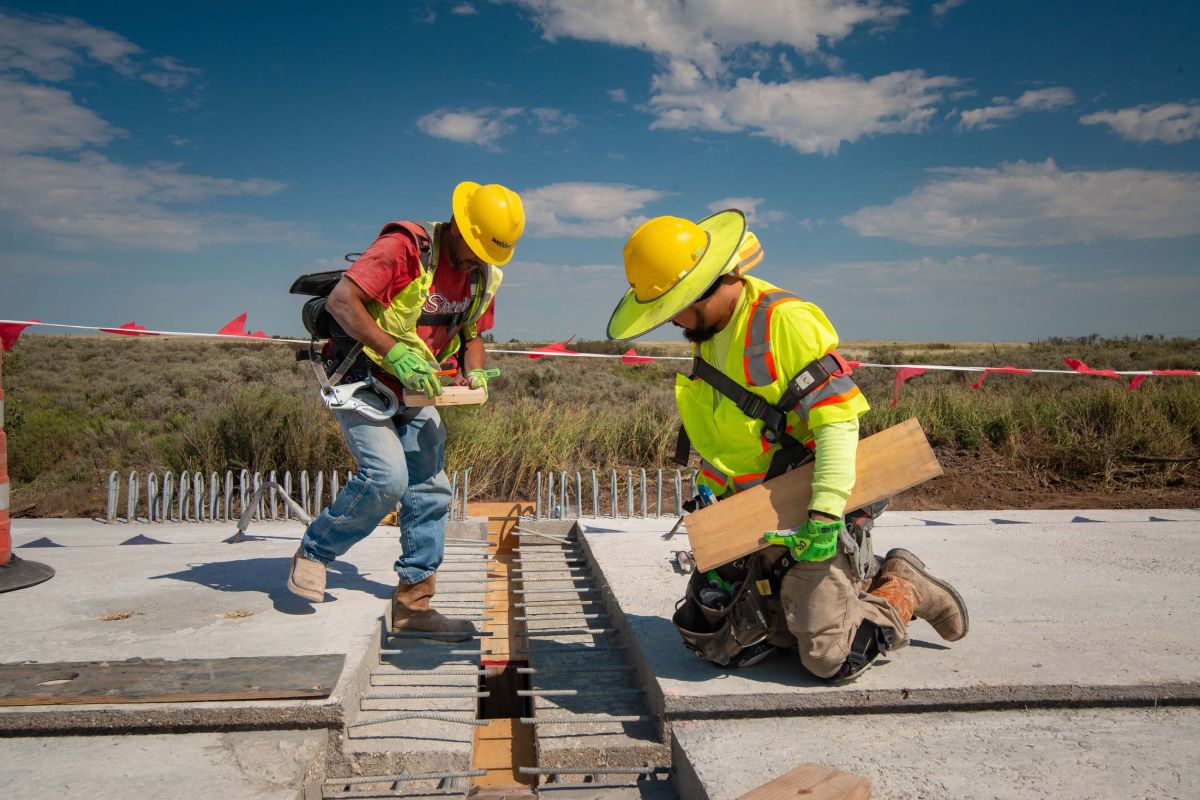
Field-Cast UHPC Connections
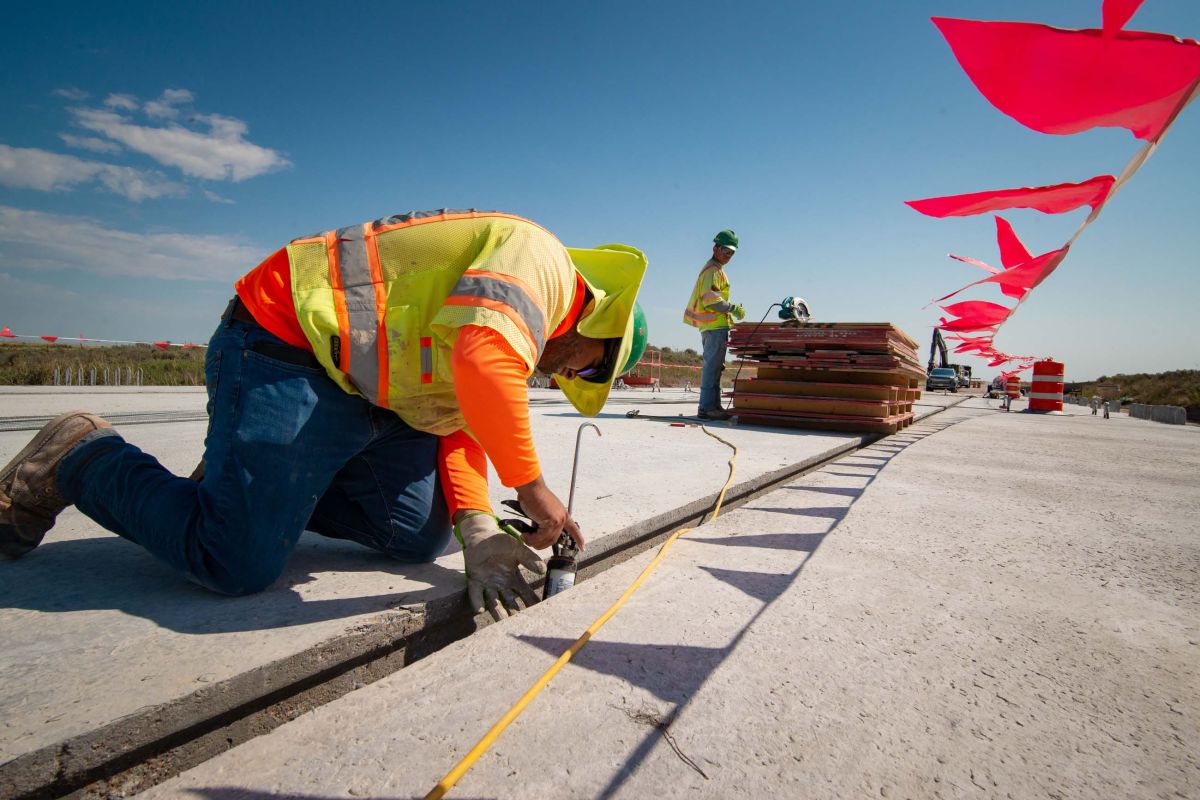
Formwork Installation
The fabricator included special holes in the precast elements to allow for the installation of threaded rods. These rods are designed to attach the formwork which is then securely tightened from the underside of the structure.
Because UHPC is highly flowable, the formwork must be made watertight to ensure no loss of material. That’s accomplished by caulking the edge between formwork and NEXT beam to createa waterproof seal. The Formwork must be installed with enough time for the caulk to dry before UHPC is placed.
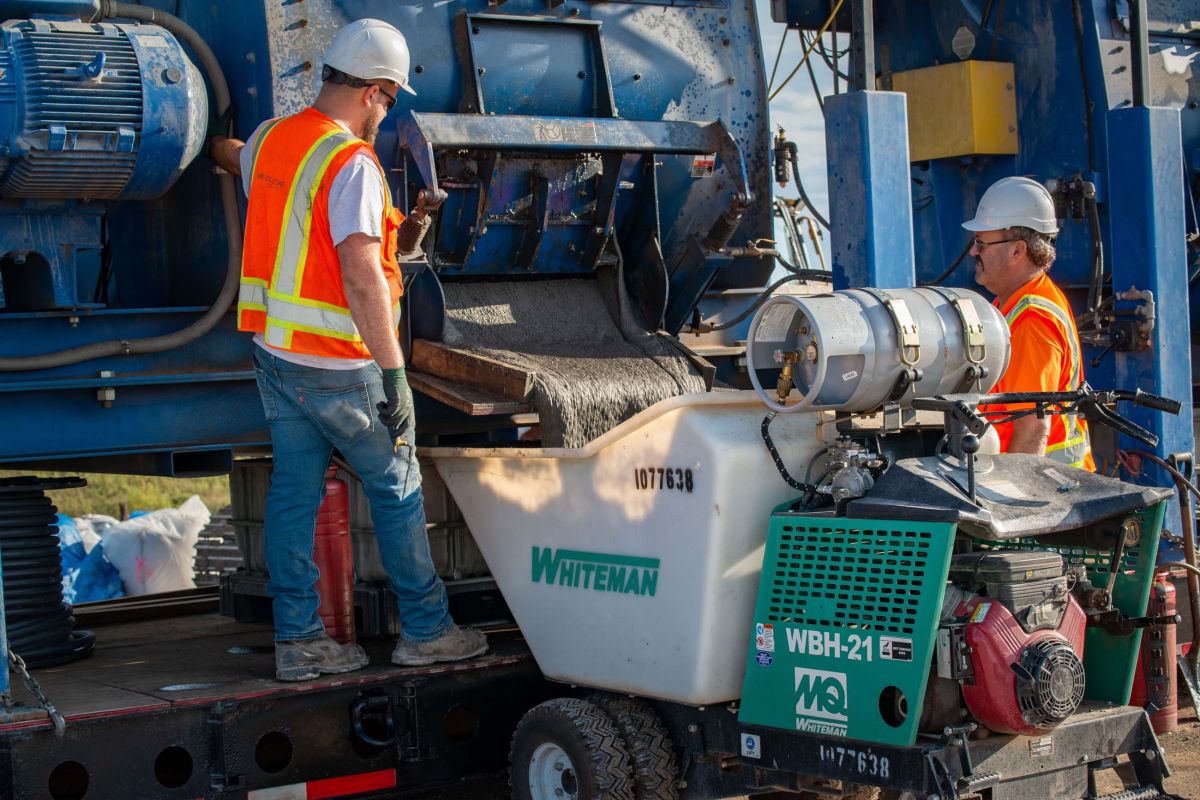
Mixing the UHPC
Two mixers, each producing 1.25 yd3 batches, were used to keep a steady flow of material available. Half of the dry premix, then water and admixtures, then the remaining premix, then steel fibers are added to the mixer. The SmartUP UHPC was able to maintain a flowable, easy-to-place consistency even in temperatures approaching the 90-degree mark.
Mixing times ranged from 12 to 25 minutes. At times, the speed of production outpaced the installation rate of UHPC, resulting in artificially longer mixing times as UHPC waited to be unloaded from mixers. The UHPC was transported from the mixer to the bridge in Georgia buggies.
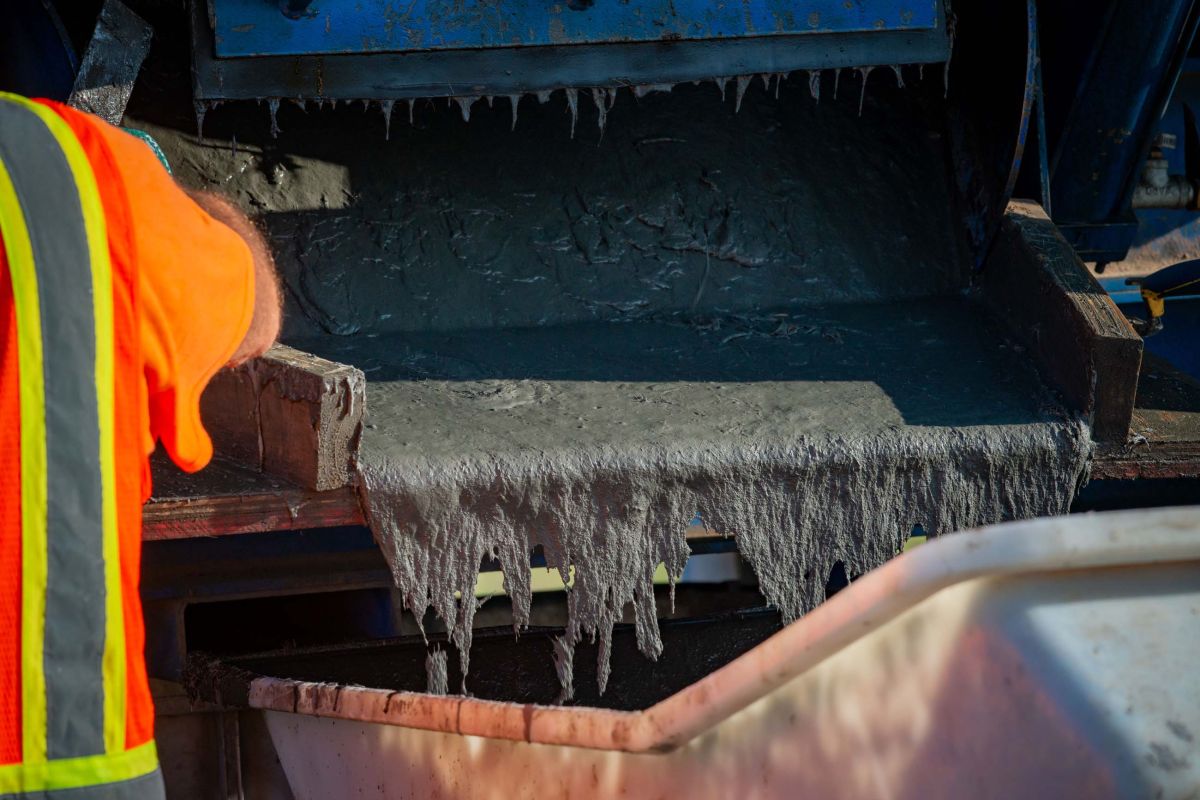
Quality Control
Because different variables can affect the mix’s outcome, it’s important to have a person dedicated to monitoring quality control. In this project, Nathan Heim, project manager for UHPC Solutions, kept a close eye on the UHPC. “When you’re out here on the job site, things like altitude, humidity, temperature can be a factor,” notes Haim. “It’s good to have someone who’s trained to be able to cope with those different variables and make sure that the outcome of your mix is what you want.”
Haim says during this placement, he made only one small adjustment to one of the adjmixtures. “After that it was pretty smooth sailing,” he says. “We found that with SmartUP, specifically, once we get it where we want it, you really don’t have to tinker too much with the admixtures. So we’ve been enjoying that.”
Fernando Pellico, Project Manager at Webber, says UHPC has impressive properties and is a great option for projects using precast elements on an accelerated construction schedule. “UHPC is very different from traditional concrete,” says Pellico.“ I think it does require a different approach in terms of safety, quality control, and placement of the material. So in my opinion, UHPC Solutions adds value by partnering with a general contractor like Webber and DOTs, providing guidance to all the steps of the construction process.”
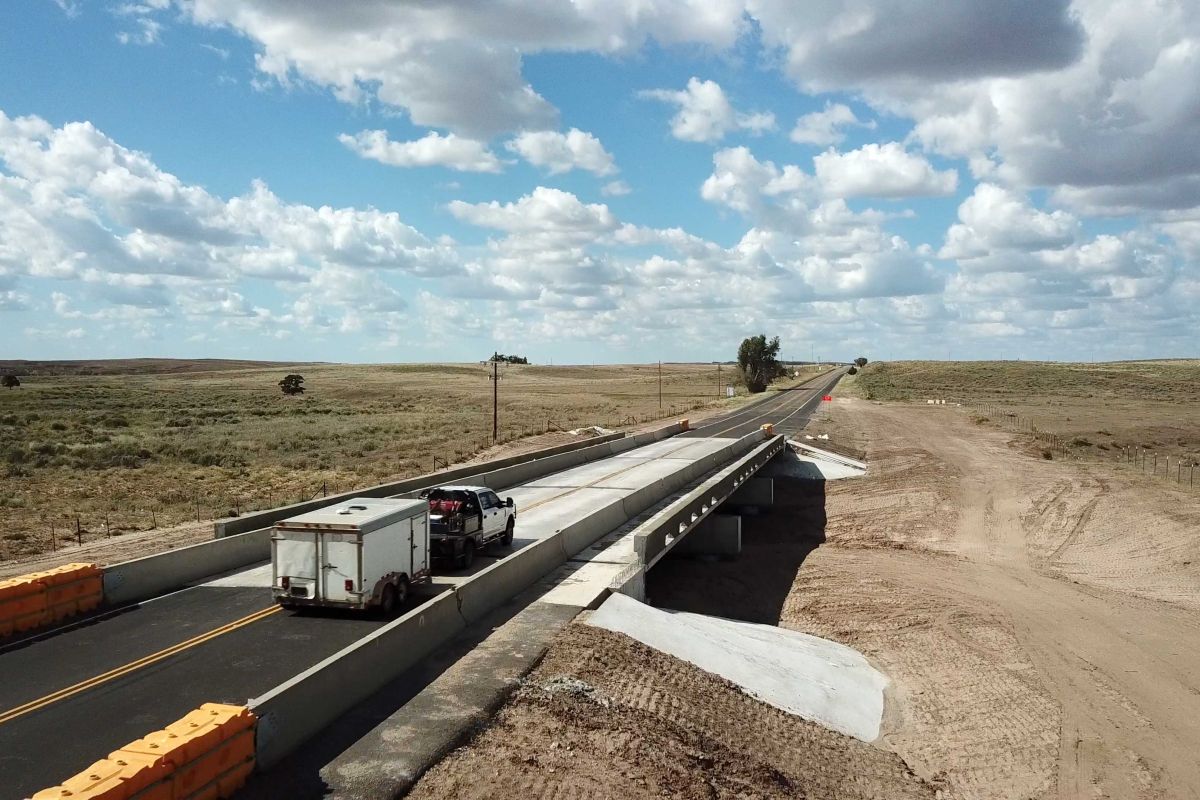
End Results
In the end, the bridge and road were closed for only 12 days. “Just a tremendous amount of time savings with this technology,” says Dave Tomley.